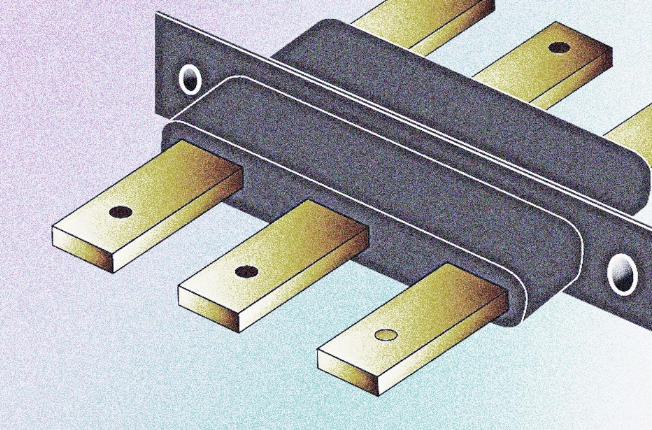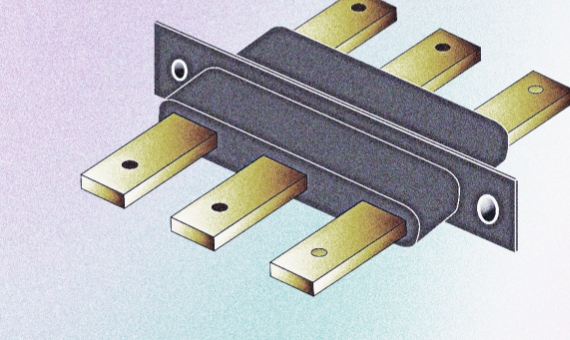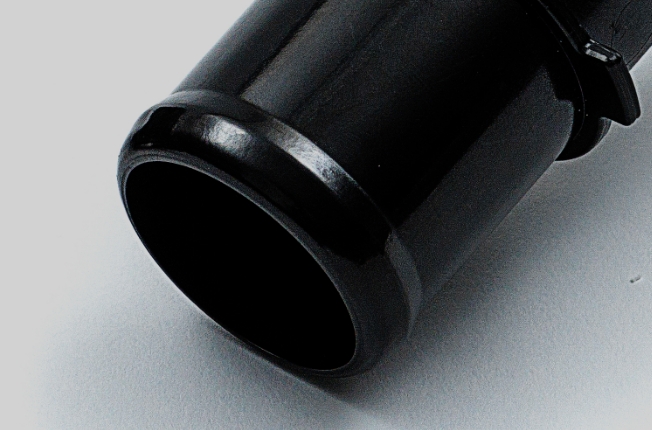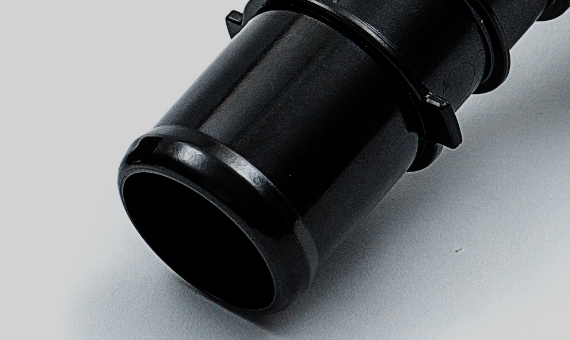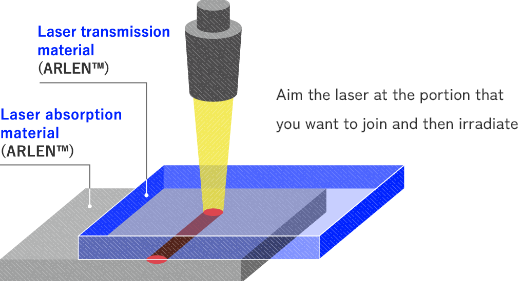
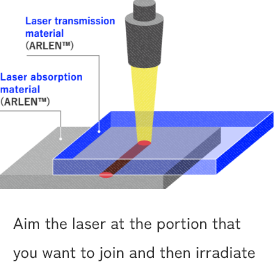
Laser welding
In laser welding, two types of thermoplastic resins that are the laser transmission material and the laser absorption material are used. By aiming the laser at the portion that you want to join and irradiating it with the laser, the laser light passes through the transmission material to generate heat at the interface between the transmission material and absorption material and melt the absorption material. At the same time, the generated heat melts the transmission material in contact. The technology for pressure-bonding and cooling them to join and solidify them is laser welding. Products containing precise inner parts can be welded, and there is a technological trend that the use of laser welding increases not only in electronic precision equipment but also in the automobile field.
Advantages of laser welding
Enables downsizing and weight reduction of products as well as reduction of the number of parts
In the case of conventional fastening with screws and so on, space and other parts were required for the joint area. Laser welding realizes downsizing and weight reduction of products as well as reduction of the number of parts.
Enhances the design freedom
Compared with adhesion using adhesives, laser welding can be applicable to any shape of joint surface. Laser welding enhances the design freedom and reduces the concerns for deterioration and performance degradation due to chemicals and ambient heat.
Enhances quality and reliability
- Laser welding does not generate heat in any area other than the joint area. Unlike in the case of welding methods that act directly on the members with vibration or ultrasonic waves, lase welding enables jointing with no concern for damage of members.
- Laser welding enhances the air tightness and waterproofing performance after jointing.
- Because lase welding is a jointing method that acts only on the interface of the member with a laser, external appearance is not deteriorated and no burrs are generated.
ARLEN™ offers grades that are applicable to laser welding to meet the needs such as downsizing and quality improvement of products.




